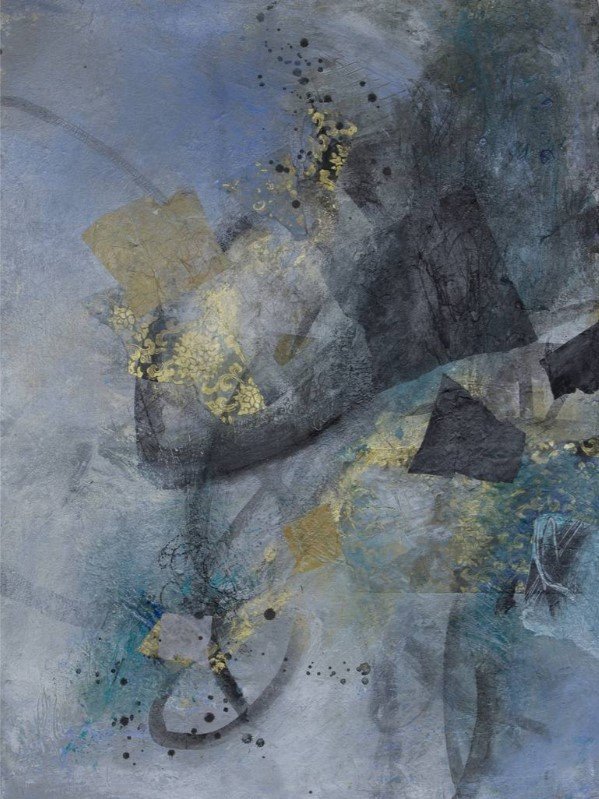The Science of Color: How Art Choices Affect Mood and Productivity
/A room is lifted up by Fragments of Life #32, 22” x 30” x 1.5” Acrylic on Canvas, © Deb Chaney Prints available on Saatchi Gallery.
Harness the power of color to transform your workspace.
Color is more than just a visual experience—it has a profound impact on our emotions, cognitive functions, and productivity. In corporate and creative workspaces, strategic color choices in artwork
Fragments of Life #32, 22” x 30” x 1.5” Acrylic on Canvas, © Deb Chaney Prints available on Saatchi Gallery.
The Psychology of Color in Workspaces
Research confirms that color influences psychological and physiological responses. Studies show that blue and green hues promote calmness and concentration, while warmer tones like yellow and orange enhance energy and creativity.
For example:
Blue tones (as seen in Fragments Of Life #32) are linked to trust, stability, and efficiency, making them ideal for offices and focus-driven environments.
Green hues (as seen in Through Sustained Activity) evoke growth, renewal, and balance, which can be beneficial in meeting rooms or brainstorming spaces.
Earthy tones (as seen in Fallen Angel) provide a grounding effect, fostering warmth, security, and collaboration in shared spaces.
(Source)
A meeting area inspires with Through Sustained Activity, 9” x 12” x 0.1” Acrylic on Canvas, © Deb Chaney Prints available on Saatchi Gallery.
Using Color to Enhance Workplace Productivity
Businesses that consciously integrate color in their spaces can improve employee performance and satisfaction. A systematic review of existing research indicates that workplace color significantly influences workers' mood, well-being, and other work-related outcomes. The review found that:
Offices with predominantly gray, beige, or white interiors resulted in higher feelings of fatigue and depression.
Workspaces featuring blue and green had increased focus and efficiency.
Warmer tones like yellow and red stimulated higher energy levels, making them ideal for creative industries.
By incorporating artwork with intentional color palettes, companies can harness these effects to enhance creativity, reduce stress, and increase engagement.
(Source)
Through Sustained Activity, 9” x 12” x 0.1” Acrylic on Canvas, © Deb Chaney Prints available on Saatchi Gallery.
Feng Shui & Color Healing: Bringing Energy into Workspaces
Beyond psychology, color has been used in healing practices for centuries. According to Feng Shui principles, different colors activate specific energies:
Blue & Green tones enhance clarity, communication, and creativity.
Warm colors like yellow, orange, and red stimulate motivation and enthusiasm.
Earthy tones like beige and umber provide stability and support teamwork.
Placing color-rich artwork strategically in a workspace can amplify these energies, making employees feel more inspired, focused, and motivated throughout the day.
(Source)
A landing gets a boost from Fallen Angel, 23” x 30” x 0.5” Acrylic on Canvas, © Deb Chaney Prints available on Saatchi Gallery.
Color & Productivity: A Strategic Approach to Workplace Design
If you’re looking to transform your corporate or home office with color-conscious artwork, consider these key takeaways:
Choose colors intentionally – Identify the purpose of each space and select colors that align with its function.
Incorporate diverse palettes – A balance of cool, warm, and neutral tones fosters both focus and relaxation.
Use large-scale paintings or murals – Expansive color fields enhance mood regulation and cognitive performance.
Companies that integrate color psychology into their office environments can create more engaging, effective, and inspiring workplaces.
Would you like to explore how artwork can elevate your workspace with the power of color? Book a consultation to discover how original art can enhance productivity and well-being in your space. Email info@debchaney.com and mention this blog to get started.










